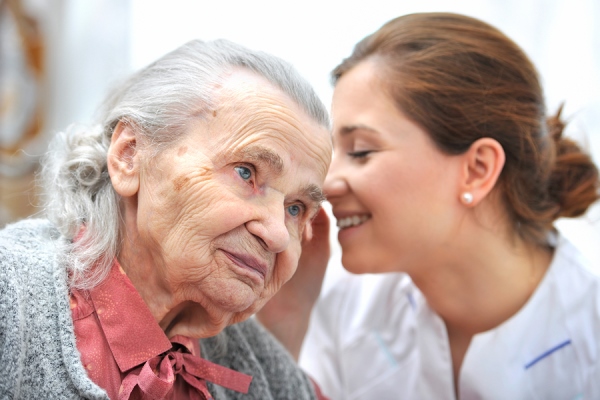Lessons From Grandma About Hearing Loss

Does this sound familiar?
During your weekly visit to Grandma's house, you notice her TV set's cranked up till the speakers rattle in protest. After two minutes of hearing Judge Judy give someone heck at 100 distorted decibels, you can't wait to leave. But with her severely impaired hearing, Grandma isn't feeling your pain. She'd probably prefer it a tad louder. You cut your visit short and jump into your car. Even before your seatbelt is on, your mega-bucks stereo is pumping out enough volume and deep bass to fill a stadium. Ah, good music... What's wrong with this picture?
Grandma's hearing began deteriorating as a result of aging, not noise exposure. But if you keep abusing your hearing, you'll probably be in the same situation before your hair turns gray.
Like aging, noise-induced hearing loss generally occurs gradually. The first few times you attended a loud rock concert, you may have noticed ringing in your ears or felt that it seemed "too quiet" outside afterwards.
In reality, the rock concert caused a temporary threshold shift - a diminished ability to hear for a period following exposure to loud noise. Half an hour later, you probably noticed it was no longer quiet; you regained your full hearing ability.
However, with repeated exposures to noise over 85 decibels (about as loud as traffic on a busy street) , hearing can become permanently damaged. The louder the noise, the sooner damage will occur.
You may protect your hearing on the job, but your ears don't discriminate between a screaming power saw and a screaming rock singer. Excessive noise of any kind damages hearing.
Plugged Into Hearing Loss
Media players with "ear-bud"-type headphones can damage your hearing. The old "muff"-type foam headphones of the early disc players left an airspace between the sensitive inner ear and the speaker. But modern earphones fit tightly into the ear canal, sending high-intensity sound directly into the aural chamber. Continuous listening, even at a reasonable volume, can damage delicate inner-ear hair cells. It's estimated that 12.5 percent of kids aged 6 to 19 have some degree of noise-induced hearing loss.
According to Christine Albertus, an Audiologist at Marshfield Clinic in Wisconsin, "They're fine to use, just limit the volume and amount of time you listen." She recommends a maximum of two hours per day and adds: "If the person beside you can hear your music, it's too loud."
Did You Know?
- Ten percent of the population has a hearing loss affecting the ability to understand what others are saying?
- One in four workers in North America is exposed to potentially damaging noise levels on the job.
- Normal conversation has a sound pressure level (SPL) of about 60 decibels (dB). A whisper is heard at about 30 dB. A jet taking off at close range can hit 140 dB.
- Loss of high frequency hearing distorts sound, causing people to have trouble distinguishing between similar sounding words such as "stone" and "bone."
How Can I Protect the Hearing I Have Left?
- Wear foam earplugs when attending off-the- job events such as concerts or car races.
- Never sit near loudspeakers in a club.
- Learn where the "volume down" button is on your remote control. Get to know it by feel.
- Use hearing protection when operating a lawnmower, chainsaw or leaf blower.
- Use hearing protection when hunting or target shooting.
